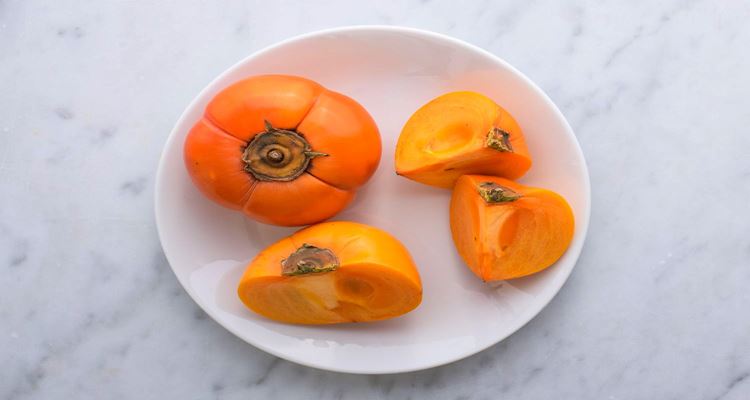Here are some things about persimmon fruit and what does this taste like?
The orange-colored persimmon fruit is loved for its sweet, honey-like taste, and here are some facts about this that you probably don’t know yet.
The persimmon is originally from China and is the national fruit of Japan. There are two kinds of this – Asian and American. The Asian kind is the one we usually see in stores while the American is the type that is grown in the wild.
Hachiya and Fuyu are the two popular types of Japanese persimmon. Hachiya is acorn-shaped that contains few or no seeds best eaten when ripe or overripe. On the other hand, the Fuyu is tomato-shaped and can be eaten when they are still hard or under-ripe.
Now, what are the benefits we can get when we eat this fruit? How can we include this in our healthy diet?

168 grams of persimmons have the following:
- Calories: 118
- Carbs: 31 grams
- Protein: 1 gram
- Fat: 0.3 grams
- Fiber: 6 grams
- Vitamin A: 55% of the RDI
- Vitamin C: 22% of the RDI
- Vitamin E: 6% of the RDI
- Vitamin K: 5% of the RDI
- Vitamin B6 (pyridoxine): 8% of the RDI
- Potassium: 8% of the RDI
- Copper: 9% of the RDI
- Manganese: 30% of the RDI
Here are its health benefits:
- It has a lot of powerful antioxidants. These antioxidants can prevent or slow down cell damage and fight against oxidative stress. It has antioxidants such as carotenoids and flavonoids.
- It can help boost heart health because of the flavonoid antioxidants it has. This can reduce blood pressure, lower inflammation, and decrease cholesterol levels.
- Heart disease, arthritis, diabetes, cancer, and obesity are associated with chronic inflammation. This fruit is also a great source of Vitamin C which also helps lower inflammation.
- This is rich in fiber and a diet rich in fiber can lower bad cholesterol. As much as we all know, having high bad cholesterol increases the risk of many serious health conditions like heart disease, stroke, and heart attack.
- The vitamin A and antioxidants it contains promotes good eye health. It is also high in lutein and zeaxanthin.
Now, how can you add this to your diet? It is a great addition to your bowl of salad, toppings on yogurt or oatmeal, roasting for a healthy dessert, combine with berries and citrus fruits for a fruit salad bowl, and throw in your favorite smoothie for added flavor, sweetness, and nutrients.
What can you say about this? Let us know!

